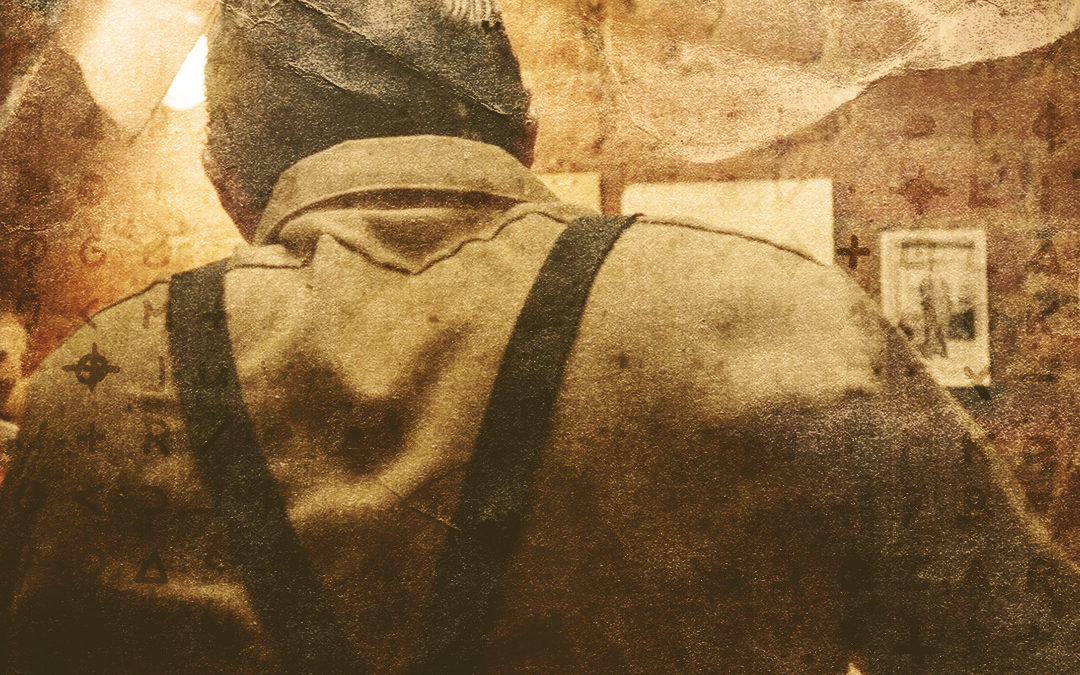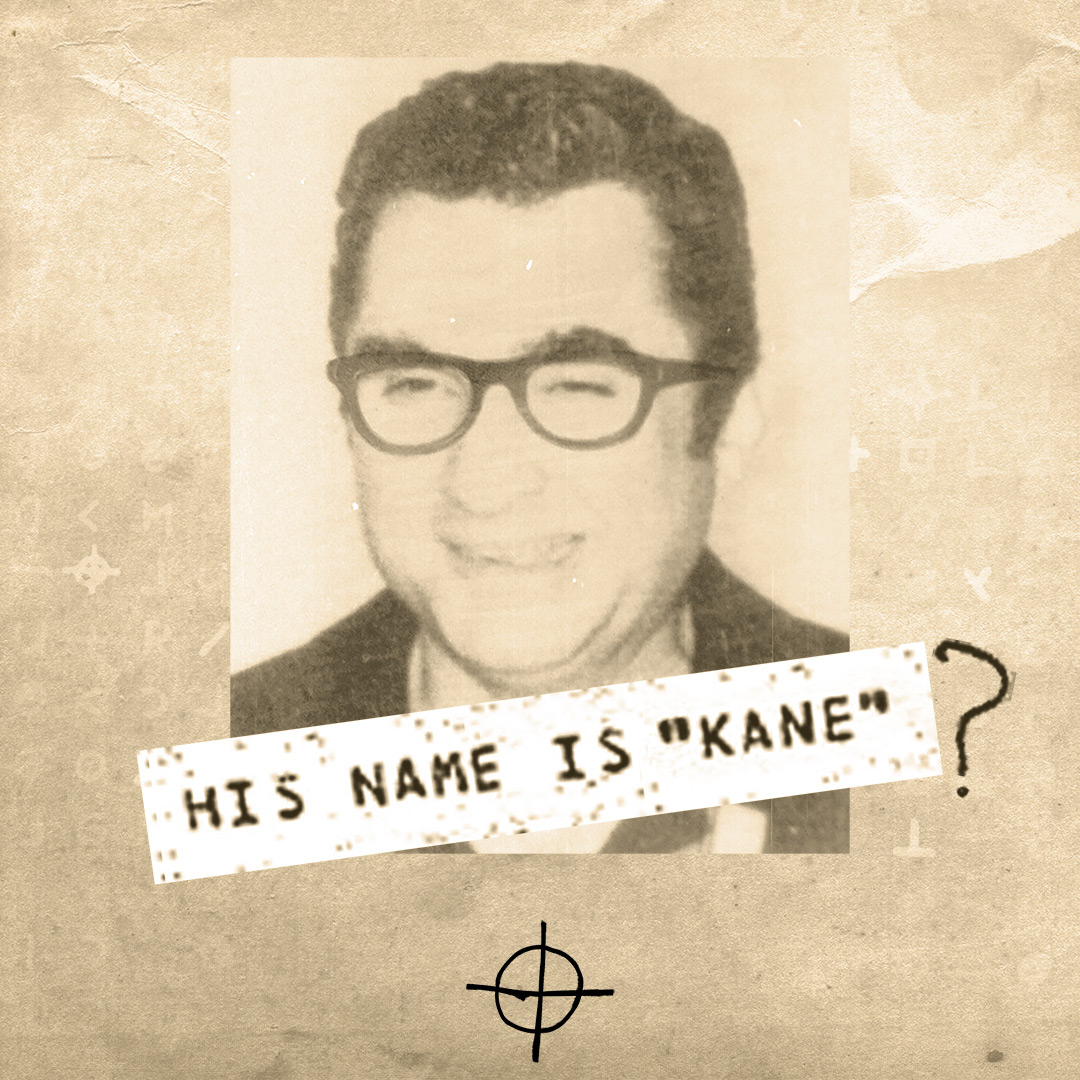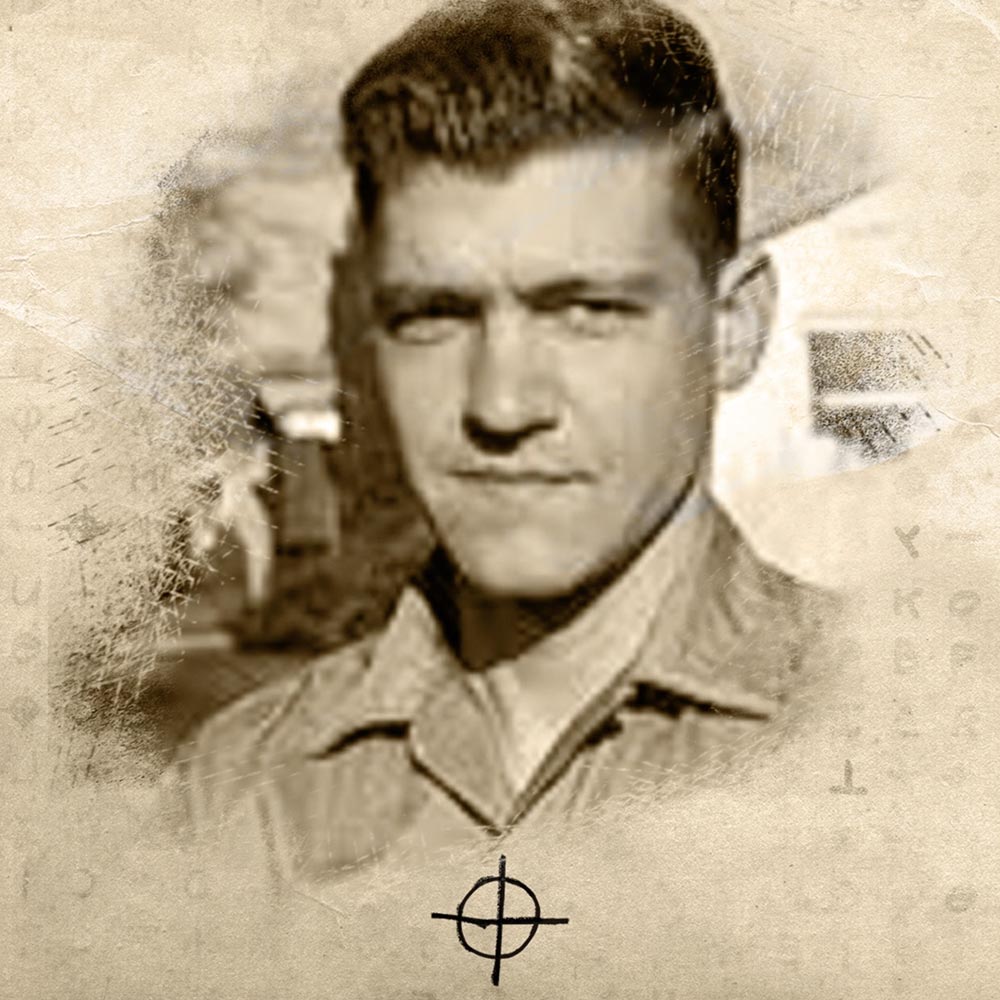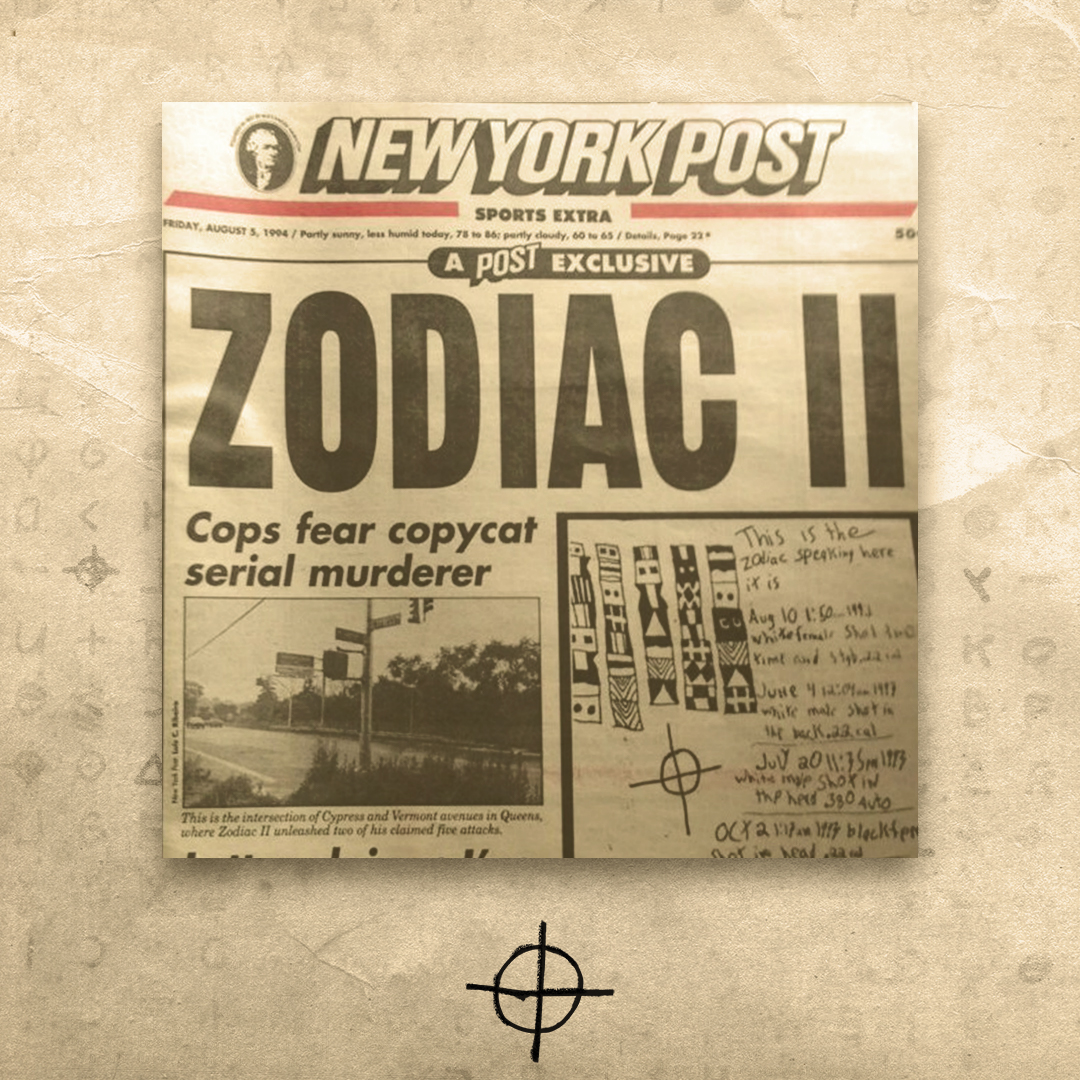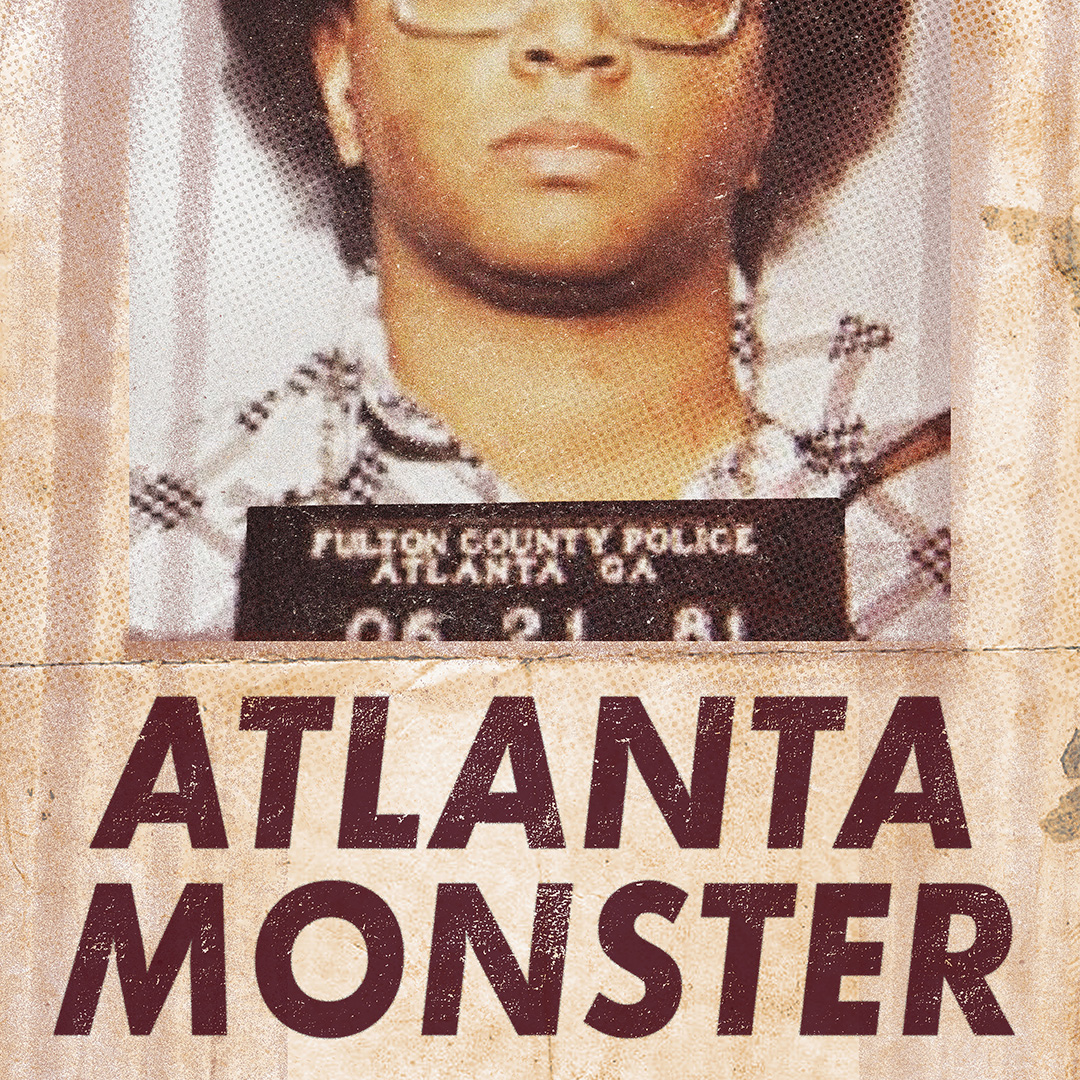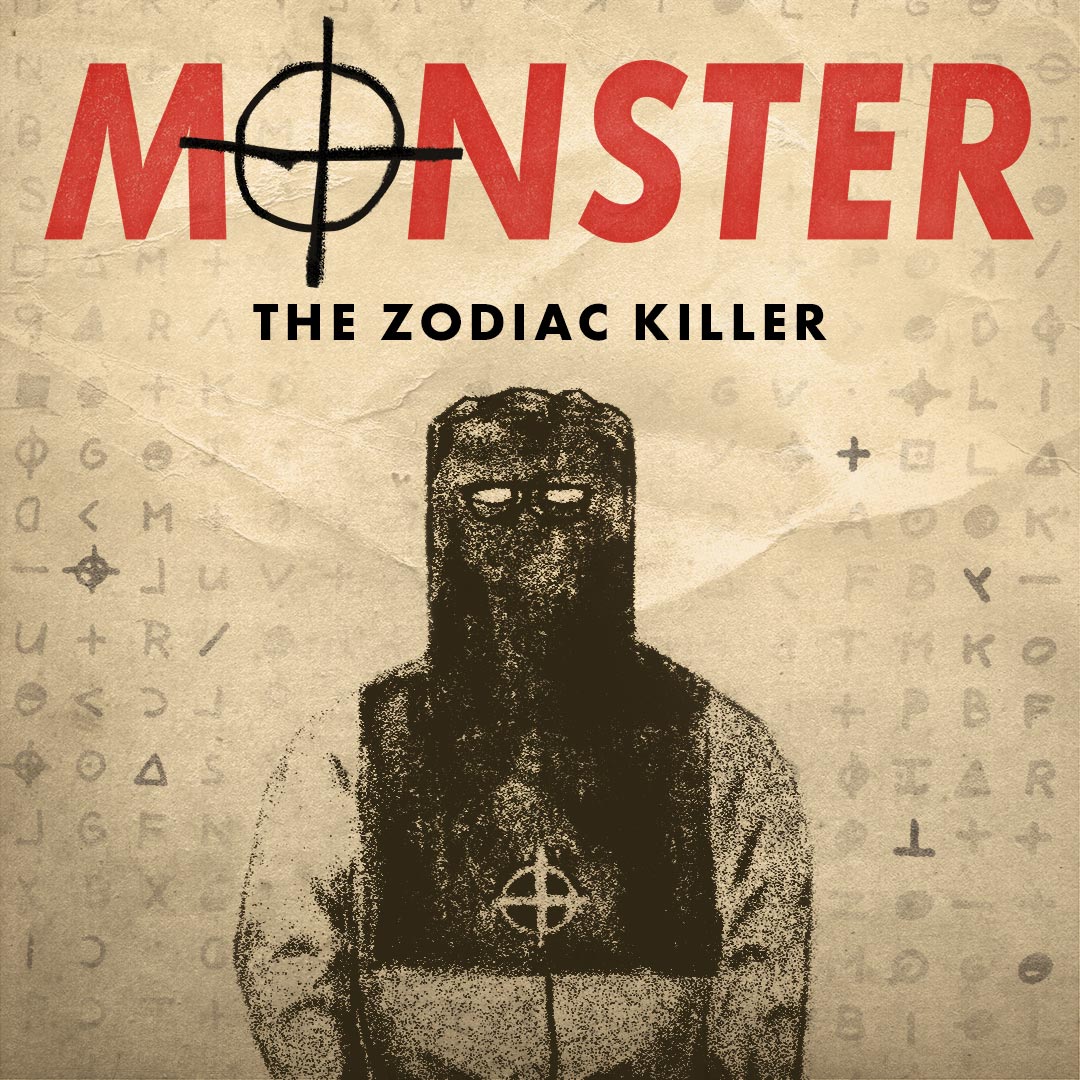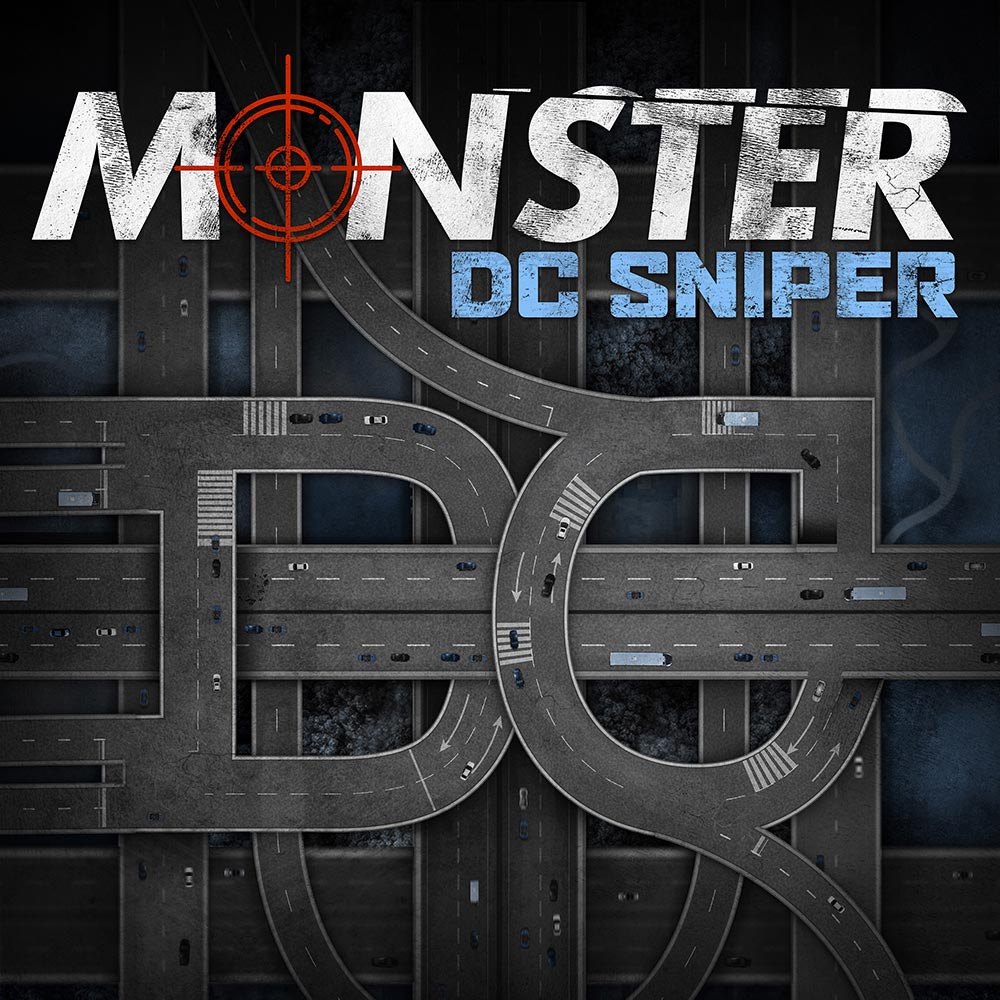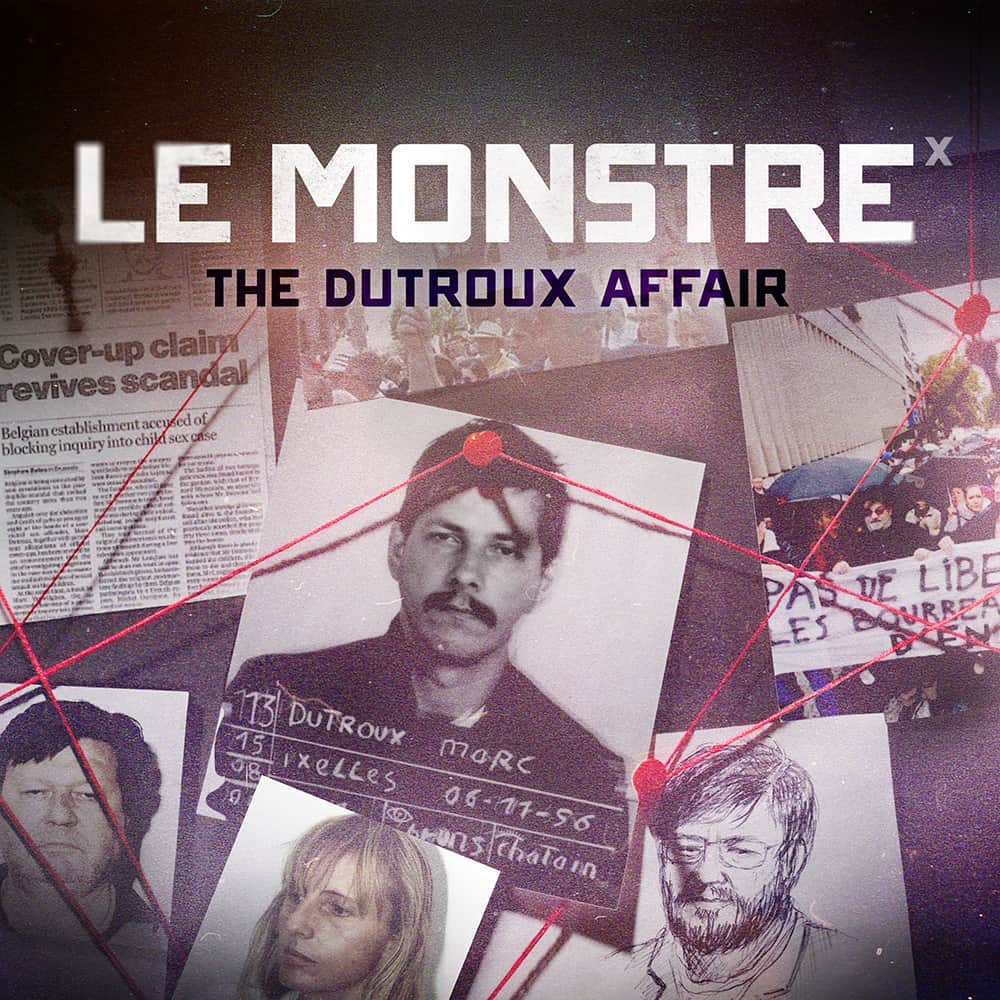10 • Doubt
What if the story you’ve heard about the Zodiac is not the real story? It’s time to separate fact from fiction.
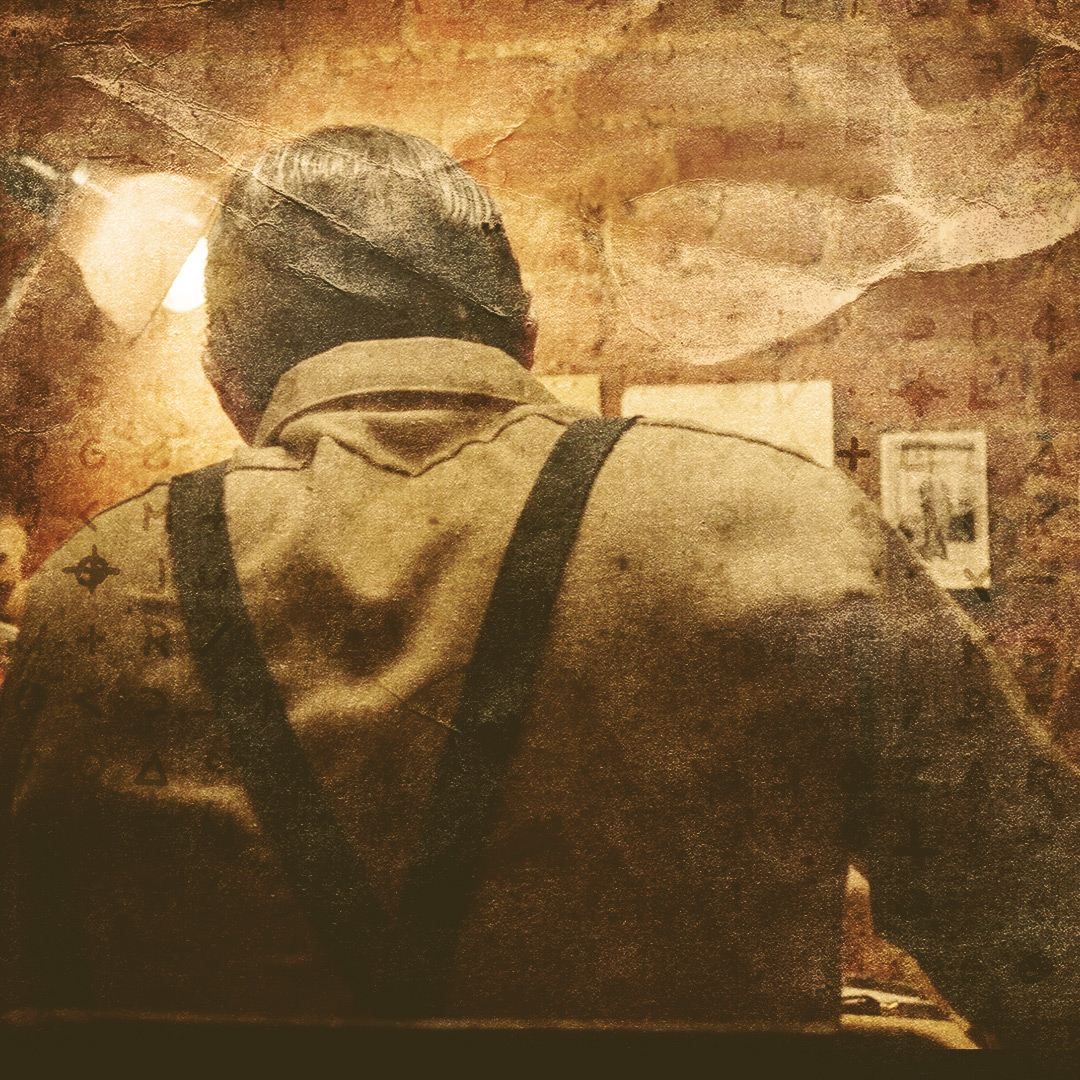
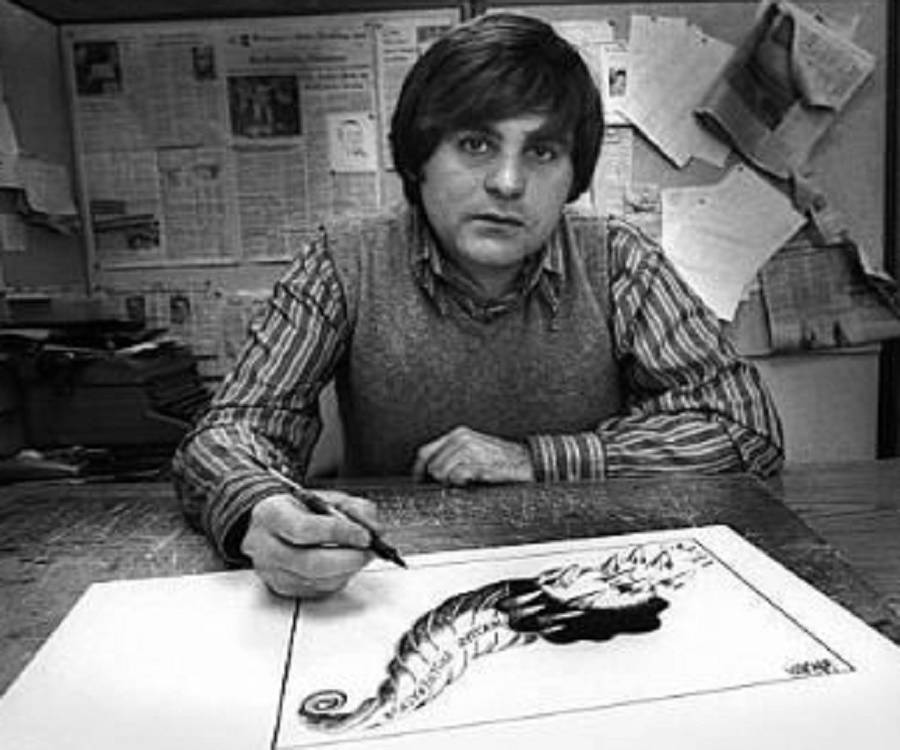
The book that was written about the Zodiac by Robert Graysmith, I never was even contacted by that person. He never asked me about it or anything, so … I don’t know. He has my name and some comments I made in his book, but I never spoke with the man or met with him, or anything.
– Ed Rust, retired Vallejo PD detective
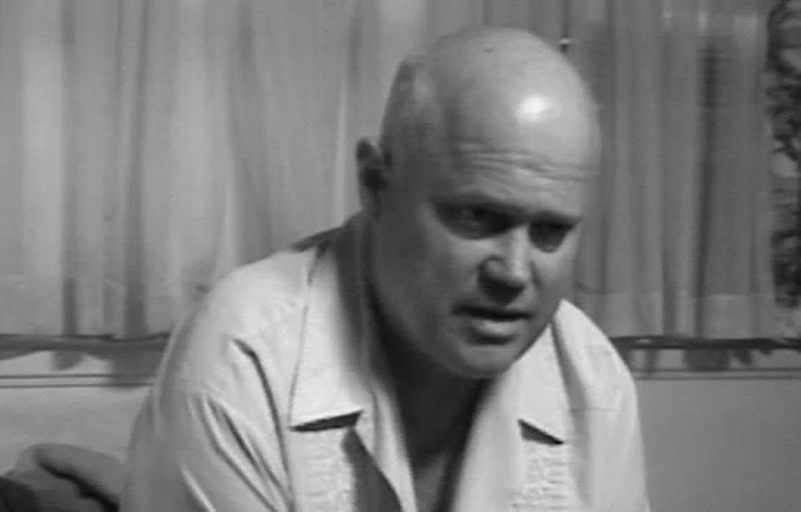
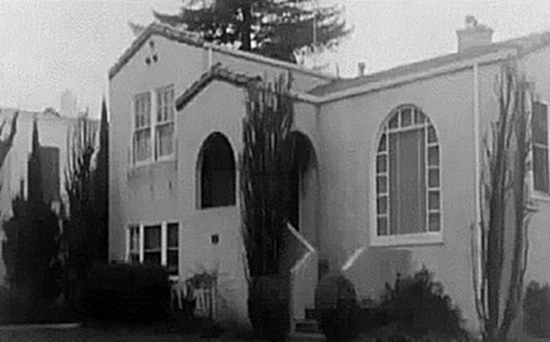
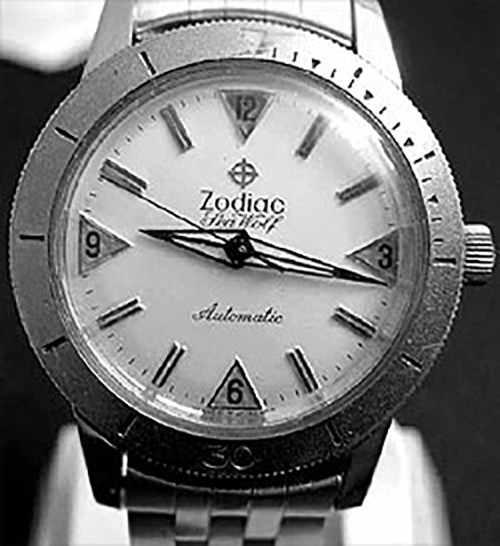
Cheney claimed Allen showed off his new watch on January 1st, 1969, but Allen’s brother Ron said that’s not true. Ron claimed their mother gave Allen that watch for Christmas in 1967, the year before. But Cheney originally didn’t tell this to police. Again, it wasn’t until years after the 1986 Zodiac book was published that Cheney supposedly remembered this story.
– Matt Frederick, host, Monster: The Zodiac Killer
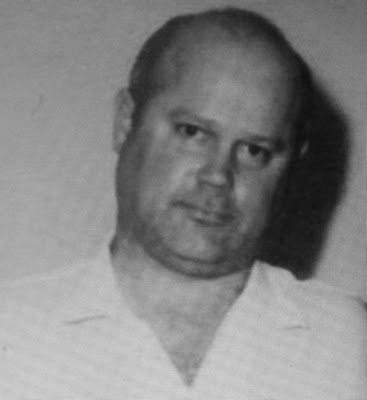
And then it became permanent, and it became a cloud, a shadow that followed him for the rest of his life.
Transcript
Speaker 1: The views and opinions expressed in this podcast are solely those of the podcast author, or individuals participating in the podcast, and do not necessarily represent those of iHeart Media, How Stuff Works or its employees.
Speaker 2: Zodiac, a symbol that now stands for terror in San Francisco. Today, there was a possibly significant development in the terrifying case of the man who calls himself Zodiac and has boasted that he is responsible for five murders in the last nine months. In Zodiac’s latest letter last week he threatened to make a busload of school children his next victims. Since then, school buses have been discretely guarded, and parents fears have openly risen. This morning, the people of San Francisco, during a television conversation program with Attorney Melvin Belli, heard a man who claimed to be Zodiac talking on the air.
Speaker 3: A man in a mask robbed, tied and stabbed them, leaving them for dead.
Speaker 4: Subject stated, “I want to report a murder. No, a double murder. I did it.”
Speaker 5: A man who wore a medieval-style executioners hood, carried a knife and gun and intended to use them.
Speaker 6: They haven’t arrested me because they can’t prove a thing. I’m not the damn Zodiac.
Speaker 7: Who is the Zodiac and where is he?
Host: The views and opinions expressed in this podcast are solely those of the podcast author or individuals participating in the podcast and do not necessarily represent those of iHeart Media, How Stuff Works, or its employees.
Female: Robert Graysmith is the author of a book called Zodiac. What happens 33 years later when you still don’t have the killer? Are there still people working on this case? Are there still tips coming in? Anything to this investigation?
Robert G.: Absolutely. You know, we’re pretty certain we know who he was, and he died with bombs in his basement and the Zodiac bomb formula, a disc in his computer that said Zodiac. I’m pretty sure that the case is solved. So much information and so much attention were focused on the prime suspect in the case, the man who actually was the first suspect, who knew all the victims, who stalked them, who had the skills and intelligence to write the letters and to commit the crimes was literally stopped dead in his tracks. He was watched, eventually sent to prison for child molesting during which there were no more activities from the Zodiac.
Host: The suspect that was focused on and highlighted in the film and in Graysmith’s book, and to a certain extent even for Toschi and Armstrong, Arthur Leigh Allen was what they call a good suspect.
Male: It’s probably Arthur Leigh Allen. That was what all the main guys investigating here though. They think Arthur Leigh Allen was the guy.
Arthur Leigh A.: I enjoy a good tussle, but hey, there were coincidences that tended to point towards me and killing just for the pleasure of it. Thank God for our Constitution, because that says a person is innocent until proven guilty.
Speaker 1: The views and opinions expressed in this podcast are solely those of the podcast author or individuals participating in the podcast, and do not necessarily represent those of iHeart Media, How Stuff Works, or its employees.
Michael B.: When Michael Mageau was recovering in the hospital, there’s evidence that he was shown photographs of several suspects, people who had been identified by police as potential suspects but there was no solid evidence against them.
Speaker 3: Michael Mageau was the sole survivor from the Blue Rock Springs attack on July 4th, 1969. He was shown photos of potential suspects the morning after the shooting.
Michael B.: As far as we know, according to those police reports, he never identified any of those individuals.
Speaker 3: At the time, Allen wasn’t in the photo lineup because he wasn’t a suspect.
Michael B.: Decades later in 1992, Michael Mageau was shown a set of photographs by retired detective from the Vallejo Police Department. One of the individuals in that photo lineup was Arthur Leigh Allen. When shown this lineup, according to George Bauer, Michael Mageau pointed to Arthur Leigh Allen’s photograph and said, “That’s him. That’s the man who shot me.” And George Bauer said, “Are you sure?” And he said, “Yes.”
Speaker 3: It had been more than two decades since the Zodiac attacked Mageau, and since that time, Robert Graysmith’s book had popularized the case against Arthur Leigh Allen, which led to Allen’s name and face being widely circulated. It made sense for Mageau to pick Allen in the lineup, but that wasn’t the end of Michael Mageau’s statement in 1992. It’s what happened next that changed Michael Butterfield’s opinion.
Michael B.: And then he pointed to the photograph of another individual in that lineup and said, “He had a face like him.” And the Vallejo Police Department did not consider his identification to be valid. Arthur Leigh Allen, at the time in 1969, did not match the description provided by Michael Mageau, and that’s sort of when I woke up to that phenomenon, that every time you’re hearing about the Zodiac case, it’s in the prism of someone’s theory. It’s not the facts, and they’re tailoring those facts to suit their theory.
Speaker 3: It’s also why Michael Butterfield began to doubt Graysmith’s account of events.
Michael B.: There was a period of time where I was really impressed with that book and thought that was the whole story, and then over a short period of time, I started to realize there was a lot more to that story than that book.
Speaker 3: Butterfield doesn’t think Arthur Leigh Allen is the killer.
Michael B.: And so over a period of years, I realized that the story that you hear about the Zodiac case is not the real story, and as you examine the facts, that story starts to disintegrate, and behind it is this other story, which is much more interesting. It’s the true story of what happened, but that’s not often what you hear in public.
continue reading
Speaker 4: A man in a mask robbed, tied, and stabbed them leaving them for dead.
Speaker 5: Subject stated “I want to report a murder. No, a double murder. I did it.”
Speaker 6: A man who wore a medieval-style executioner’s hood, carried a knife and gun and intended to use them.
Arthur Leigh A.: They haven’t arrested me because they can’t prove a thing. I’m not the damn Zodiac.
Speaker 8: Who is the Zodiac and where is he?
Speaker 3: From iHeart Radio, How Stuff Works, and Tenderfoot TV, this is Monster: The Zodiac Killer.
It seemed as if the odds were stacked against Arthur Leigh Allen. His home had been searched over multiple occasions over decades of time. He had been harassed by investigators and reporters nearly his entire life, but almost all the evidence against Arthur Leigh Allen was circumstantial. The timing of the last letters, the odd items found inside his home, his Zodiac watch. A lot of this was based on one book, Robert Graysmith’s Zodiac. But many people began to notice issues in that book, including some people whose stories were in it.
Dean Ferrin: There’s a lot of rumors around. Everybody said, “Oh, we paid cash for that house with drug money.”
Speaker 3: Dean Ferrin is the former husband of Darlene Ferrin, the waitress killed at Blue Rock Springs. The Graysmith book suggests Darlene had extra money from selling drugs, which perpetuated the rumor that Dean and Darlene bought their house with that money.
Dean Ferrin: If they would’ve done any research, they could’ve seen that, okay, there was a mortgage on it. It’s pretty much public record who owns the house and where it came from.
Speaker 3: And that wasn’t the only issue Dean had with the Graysmith book.
Dean Ferrin: Then the night of the shooting itself, he says that the Zodiac called the house, which, okay, that’s probably true. Somebody did. But he says that from where he was, he could look through the back window of the house and see who answered the phone. Well, that’s impossible because it’s like four blocks away, and there are two big buildings with trees and everything around it so you could tell he never came to town. Geographically, it couldn’t be done.
Then there are quite a few quotes in the book that I’ve never spoken to the man.
Speaker 3: When we spoke with retired Vallejo PD detective Ed Rust, he was also skeptical of the Graysmith book.
Ed Rust: The book that was written about the Zodiac by Robert Graysmith, I never was even contacted by that person. He never asked me about it or anything, so … I don’t know. He has my name and some comments I made in his book, but I never spoke with the man or met with him, or anything.
Speaker 3: The book was not the only source of stories that accused Arthur Leigh Allen. There was also the testimony of Allen’s former friend, Don Cheney. Cheney’s story heavily implicated Allen, but it’s possible he had another motive. Remember, the two men had a falling out because Allen allegedly tried to molest one of Cheney’s children. Could this be enough motive to try and frame Allen?
Michael B.: So by 1971 when the police were investigating, they didn’t have much to go on or to prove that any of his accusations were true. They just had to basically accept what he was saying and then go investigate Allen. Now, in subsequent years, a lot of people, including myself, who have gotten access to the police reports … I’ve interviewed Arthur Leigh Allen’s family. I actually interviewed Don Cheney myself several times, and Don Cheney made statements to me which were demonstrably false. He embellished elements of his story. He added elements to his story. He changed the elements of his story. He initially said that this conversation had taken place in December of 1967, but then he also claimed that Arthur Leigh Allen had been talking about losing his job, a job that he didn’t lose until March of 1968. So obviously there was something wrong there, and as soon as Cheney realized the timing didn’t match up with the facts, he changed the date of that conversation.
The date was always crucial because he was claiming this occurred before the Zodiac murders began, but later on, he started claiming that Arthur Leigh Allen took him to the scene of the murders on Lake Herman Road, that he talked about disabling women’s cars by removing the lug nuts on their tires, of course, an allusion to the Kathleen Johns abduction.
Speaker 3: That doesn’t match up with Cheney’s initial claim that he hadn’t talked to Allen since their falling out in 1969. Also, Cheney didn’t add the detail about disabling cars until he spoke with police for the second time in 1991, years after Graysmith’s book came out.
And what about the connection Cheney made between Arthur Leigh Allen and Darlene Ferrin? Remember, Allen had supposedly told Cheney he had become friendly with Darlene at the restaurant where she worked, but Cheney didn’t remember Darlene when he spoke to police in 1971 and 1991. It wasn’t until he spoke with Graysmith, not the police, that he made the connection. This was shortly before Graysmith’s second book was published in 2002.
The discrepancy in Don Cheney’s timelines is the same with Arthur Leigh Allen’s watch. Cheney claimed Allen showed off his new watch on January 1st, 1969, but Allen’s brother Ron said that’s not true. Ron claimed their mother gave Allen that watch for Christmas in 1967, the year before. But Cheney originally didn’t tell this to police. Again, it wasn’t until years after the 1986 Zodiac book was published that Cheney supposedly remembered this story.
Michael B.: So there are some serious, serious problems with Don Cheney and his credibility, and he’s the foundation for all of this. I was forced to conclude that Don Cheney was not truthful, and that wasn’t because I don’t like Allen as a suspect, or because I just didn’t want to believe him. It’s because that’s what the facts indicate. That coupled with the accumulated effect of years of misinformation and propaganda from the book Zodiac combined into this horrible situation for Arthur Leigh Allen, where now most people were convinced of his guilt, but the information used to convince them was usually not the truth.
I’ve often thought about what must’ve happened when the book Zodiac came out, and it said that Arthur Leigh Allen’s family believed that he was the Zodiac, and had reported him to police. That was not true. Arthur Leigh Allen’s family never suspected that he was the Zodiac, they never reported him to police, but can you imagine the problems that created in his family?
If you think about something like Occam’s Razor, that the most logical explanation, the explanation with the least unnecessary parts, then the most likely explanation is that Arthur Leigh Allen was not the Zodiac, and that the reason most people think he is the Zodiac is because of that book, and then the film adaptation by David Fincher in 2007, which also altered some facts to make Allen look more guilty than the facts would permit.
So at the end of the day, Arthur Leigh Allen is probably the best-known Zodiac suspect, he’s probably someone that many people still believe is guilty, but the facts tell a very different story.
Speaker 3: One glaring irregularity in the case against Arthur Leigh Allen was the witness description.
Ed Rust: Arthur Leigh Allen worked in a hardware store in Vallejo, and I had been in that hardware store, and believe had to contact with him. And he was about six-foot-five, a big, hefty guy, and probably weighed 250 pounds or more. Big, big man. And I dismissed him mainly because of my interview with Michael Mageau where he described the suspect as about five-eight or five-nine standing next to the very low profile sports type vehicle that he was in when he was shot.
In my mind, if Arthur Leigh Allen, at six-foot-five, 250-plus pounds had walked up to that car, Michael Mageau would’ve said, “This guy is huge,” or something along that line. That he would’ve described a very large man, tall, whatever like that. But in his interview with me, consistently stuck to five-eighth, five-nine, and the only thing as far as being big and overweight would be a paunch on his belly. In my mind, that’s not anything other than my what you call gut feeling like a cop that Michael Mageau would’ve given an entirely different description of that large man that walked up next to the car to him, but if it’d been Arthur Leigh Allen, I think it would’ve been a much different physical description, at least in height and weight.
Speaker 3: Allen’s height and weight weren’t the only physical descriptions that didn’t add up. Bryan Hartnell, the survivor from Lake Berryessa, did say Allen could possibly be the Zodiac, but Hartnell also admits the Zodiac’s size could’ve been dependent on whether or not the jacket he was wearing was lined or unlined. Hartnell said if the killer was wearing a lined jacket, he could’ve been a thin man. Again, Hartnell’s description didn’t match the six-foot, 250-pound man that was Allen, but there’s a third factor that stands out here. Hartnell said when the Zodiac turned his head, he saw some of the man’s hair, and it was brown. Arthur Leigh Allen was balding.
But it wasn’t only victims who said that Allen didn’t match the Zodiac’s description.
Michael B.: It’s also interesting to note that, the police officer who reportedly saw the Zodiac at the scene of the last known murder, said that Arthur Leigh Allen didn’t match the description of the man he saw.
Speaker 3: Don Falk described the Zodiac as a white male adult in his early 40s, five-foot-eight, heavy build, reddish-blonde crew cut, and wearing glasses. Again, the description doesn’t match Allen’s height or weight, and in all three cases, not one witness mentioned the Zodiac as balding.
Mageau wasn’t the only person in 1992 to be shown a photographic lineup. Kathleen Johns, the woman who claims the Zodiac attempted to kidnap her, was also shown photos of possible suspects, but Johns didn’t pick Allen. She chose someone else.
The eyewitness accounts of the Zodiac didn’t match Arthur Leigh Allen, but there was another major factor that also didn’t add up. His handwriting.
Susan Morton: My name is Susan Morton. I am retired from the San Francisco Police Crime Laboratory where I served for some years as their forensic document examiner.
Speaker 3: A forensic document examiner uses scientific processes to examine documents from crime scenes. Examiners not only compare handwriting, but they can also tell where the material came from, and if the document has been altered.
Susan Morton: I would usually start with the known writing, and my method was to sketch it in my own effort, and that would make me pay attention to things like size ratios. And I could have a “TH” combination, which is a pretty common combination of letters. Which one is taller? And you’ll find that a writer is very consistent about these ratios.
I would figure all of those out and get fixed in my mind not only how this person forms letters and the ratios and things like that, but how they vary. People are not machines, and they are never going to write exactly the same way twice, but they’re going to vary within certain parameters.
Speaker 3: Susan worked at a Bay area laboratory that had done most of the original work on the Zodiac case. At the time, the San Francisco Police Department used that lab because they didn’t have a document examiner on staff.
Susan Morton: The first thing I would do is see if it is naturally written. When someone is attempting to copy someone else’s signature, they’re not actually writing. They’re drawing a picture. Drawing and writing are completely different acts. The writing that is copied looks very different from normal writing. I’m not going to be able to tell who did create that, but I can determine that the person whose signature it supposedly is did not write it because nobody forges their own signature like that. It’s a very laborious process.
Speaker 3: In 1998, Susan inherited the Zodiac case from the San Francisco Police Department. She became what she calls the custodian of the letters. Susan would do handwriting comparisons every time a new Zodiac suspect was offered up.
Susan Morton: The Zodiac letters were hand printed, and they were extremely fluently done. Very rapidly. When you’re going fast, you don’t have the ability to disguise your handwriting because you’re going to do what your program tells you to do if you’re going fast. You can tell this by how the ends of the letters tail off into little feathered … We call them flying finishes. So I knew that the body of that writing was the way that person wrote. This wasn’t some disguise that had been devised.
The writing had a right-hand slant, and the ‘D’ was consistently more slanted than any of the other letters, and that’s a very unusual characteristic, and that was consistent throughout all of the Zodiac’s writing. I was of the opinion that it was the natural writing of that person.
Speaker 3: Natural handwriting is the way a person writes with their dominant hand. For example, if someone who is right-handed tried to write with their left hand, that writing wouldn’t be considered natural.
Some people theorize Arthur Leigh Allen was ambidextrous, and he could’ve used his less dominant hand to help disguise his writing, but that wouldn’t have worked because even if he’d used his other hand, it still would’ve been his natural handwriting.
Susan doesn’t believe Arthur Leigh Allen disguised his handwriting based on her findings.
Susan Morton: And there were numerous consistent differences with the writing of Arthur Leigh Allen. I had copious amounts of his writing, contemporaneous to the Zodiac letters. Remember, they were written back in the ‘60s and early ‘70s, but I had written of Arthur Leigh Allen’s from back then, and it was writing that he did in what we call a normal course of business. It wasn’t something he sat down and wrote to be used as handwriting exemplary. It was application forms and things like that. So he was unaware anybody would ever look at that when he wrote it, and there was just no match whatsoever.
Speaker 3: The lab also tried to develop fingerprints from the letters, but the only usable print developed was a palm print. It’s called a writer’s palm, the way a person’s hand rests on a page when they write.
Susan Morton: So we were virtually certain that those prints did belong to the writer of the letters. And also I believe that they did do comparison of his palm print to these writer’s palms, and there were several of those on different letters, and they did not match his palm print. So he did not write those Zodiac letters. There was no indication and many indications that he didn’t write it.
Every investigation of him eventually cleared him, so he was not the Zodiac.
Michael B.: When Arthur Leigh Allen was first questioned in October of 1969, he thought it made him seem important. For the first time maybe instead of being viewed as some pathetic child molester, now he was being viewed as one of the most brilliant master criminals in history. It appears that he may have bragged about that, and may have talked about that. At least Arthur Leigh Allen’s family thought that at first, he enjoyed that kind of attention, and then it backfired.
Arthur Leigh A.: They took a lot of my tapes. They took samples of my handwriting.
Michael B.: And then it became permanent, and it became a cloud, a shadow that followed him for the rest of his life.
Arthur Leigh A.: I’ve never been known for good luck. I guess this is pretty much-living proof of it. I couldn’t murder anyone.
Michael B.: But if you put yourself in his shoes, most people wouldn’t want to be accused of murder, and if they were going to be accused of murder, at least do it with the facts. Don’t use fiction to accuse somebody.
Arthur Leigh A.: Two types of liars in the world, fishermen, and policemen, and not necessarily in that order.
Michael B.: So it’s got to be a really terrible place to be to know that there’s a book out there that claims you’re the Zodiac and is filled with a lot of nonsense, and people believe it, and while at first you might be tempted to play along and say, “Yeah, well maybe I am the Zodiac,” or whatever, then it becomes a ball and chain that you cannot escape.
Arthur Leigh A.: I am not the Zodiac killer. I know that. I know that deep in my soul.
Michael B.: And by the time they were searching Allen’s home, and he’s being interviewed by the police, and his name is all over the place, it was all over at that point. He had no choice anymore, and he is now going to forever be known as the man that was most likely the Zodiac.
Arthur Leigh A.: I couldn’t murder anyone. It’s difficult as hell, and it can be terribly depressing, and if I deserved any of it, that would be something different, but I don’t.
Speaker 12: Today, Vallejo Police investigators say they never charged Allen because they couldn’t explain discrepancies in the Zodiac’s handwriting.
Arthur Leigh A.: They haven’t arrested me because they can’t prove a thing. I’m not the damn Zodiac.
Speaker 12: The Zodiac Killer or victim of years of police harassment? Arthur Leigh Allen took the answer to his grave.
Speaker 3: Arthur Leigh Allen died from natural causes in August of 1992. Vallejo Police Department officials found him unresponsive on the floor in his basement. A polygraph agreement was resting in his printer. The Vallejo Police had been pushing for Allen to take another polygraph test, and it seemed he had decided to give in. At 58 years old, he was still fighting to prove his innocence.
Speaker 12: He was one of the unluckiest people on the planet because it literally destroyed him. He ended up dying about a year after the first search of his home, and of course, they might as well have carved onto his gravestone “The man most people thought was the Zodiac.”
So what you’re left with is a man who’s been accused of almost 50 years on the basis of statements made by two very questionable witnesses. None of the evidence implicates him in the crimes. Every single time they find some evidence, whether its fingerprints, handwriting, DNA, palm prints, or eyewitness descriptions, it doesn’t match Allen, and his accusers will tell you that’s because he’s a master criminal who is brilliant and can fake evidence and gets away with it.
Speaker 3: One of those people who clung to the belief it was Arthur Leigh Allen was Inspector Dave Toschi. He was first brought onto the case during the cab driver murder in San Francisco. While Toschi hunted for connections to prove Allen was the Zodiac, others began to look elsewhere.
Speaker 13: In the late 1980s, I began working for a company called Orchard Supply hardware, and later I became what’s called a regional loss prevention, or a security manager for the hardware stores. I belonged to a couple of different security associations, and one of them at a luncheon that I attended at one of the security organizations, they had a guest speaker who was going to do a presentation on the Zodiac killer, and it turned out to be a man named Harvey Hines, who was actually a police officer, but he had never worked in any jurisdiction where any of the claimed Zodiac killings.
Anyway, he gave a presentation and showed he had identified a person named Larry Kane that he believed was the Zodiac.
Speaker 3: Next time on Monster: The Zodiac Killer.
Speaker 14: And it was just so creepy, and just so freaked out this woman that she just quit her job. And Larry Kane was just a creepy, odd character. Full of stories like that.
Speaker 15: Because he was part of the mob, he may have turned somebody in, and they put him in the protection program.
Speaker 16: For the last nine years, the Zodiac investigation has been headed by homicide inspector David Toschi.
Speaker 17: I have always felt a gut feeling that he was not dead, and he was out there somewhere, and that he would communicate.
Speaker 18: There is no official police clamp on Inspector Toschi talking with the media. That matter is entirely up to him.
Speaker 19: It went off like a flash. Oh, my goodness. That definitely looks like Zodiac.
Speaker 20: If we want to just make some advancements, and get something major … I think I’ve come up with something major. It’s an interesting bit of information that nobody knew about before, and I think we’re 50 years into it, and it’s time to solve the case.
Speaker 3: Monster: The Zodiac Killer is a 15 episode podcast produced by iHeartRadio, HowStuffWorks, and Tenderfoot TV. Donald Albright and I are executive producers on behalf of Tenderfoot TV. Alongside producers Meredith Stedman, Mason Lindsey, and Christina Dana. Jason Hoch is executive producer on behalf of HowStuffWorks, along with producers Trevor Young, Miranda Hawkins, Ben Kuebrich, and Josh Thane. Scott Benjamin provides additional voice talent. Matt Frederick is our host. Original music is by Makeup and Vanity Set.
If you haven’t already, make sure to check out the first season of Monster called Atlanta Monster, about the Atlanta child murders from the late ‘70s to the early ‘80s. Download the 10 episode season right now.
Have questions or comments? Email us at Monster@HowStuffWorks.com, or you can call us at 1-833-285-6667.
Thanks for listening.
Episodes
11 · Trails
Toschi’s investigation led to a dead end, but independent investigators are chasing down other leads.
12 · Rabbit Holes
New theories bring new suspects. But for many independent investigators, those theories are truth.
13 · Copycat
Fascination leads beyond obsession, as a new Zodiac emerges in New York City.
